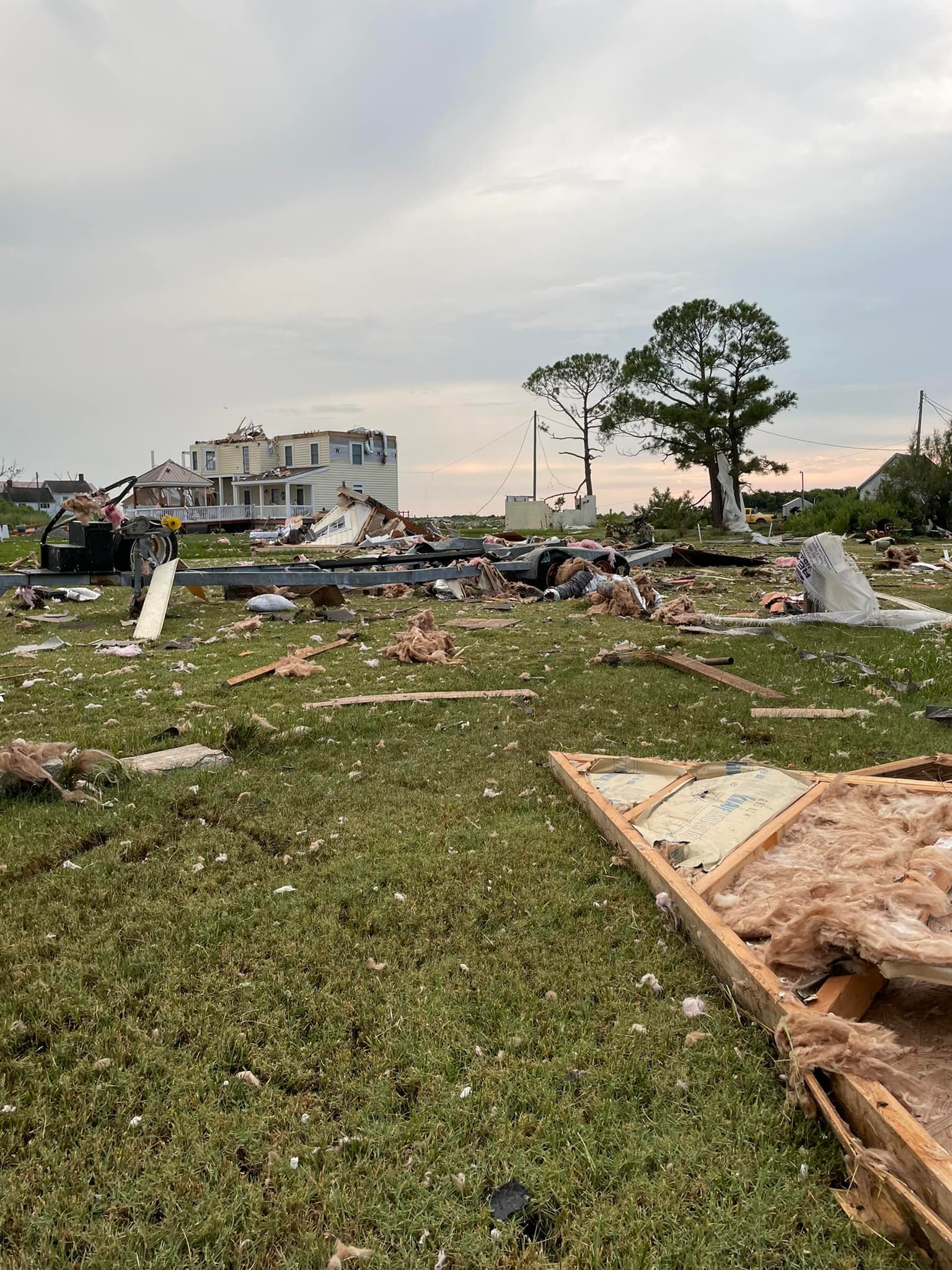Waterspout destroys several homes on Maryland island
The twister flew across the water before hitting homes in the small community of Smith Island

Your support helps us to tell the story
From reproductive rights to climate change to Big Tech, The Independent is on the ground when the story is developing. Whether it's investigating the financials of Elon Musk's pro-Trump PAC or producing our latest documentary, 'The A Word', which shines a light on the American women fighting for reproductive rights, we know how important it is to parse out the facts from the messaging.
At such a critical moment in US history, we need reporters on the ground. Your donation allows us to keep sending journalists to speak to both sides of the story.
The Independent is trusted by Americans across the entire political spectrum. And unlike many other quality news outlets, we choose not to lock Americans out of our reporting and analysis with paywalls. We believe quality journalism should be available to everyone, paid for by those who can afford it.
Your support makes all the difference.A waterspout touched down in Maryland on Thursday, flying over the water before destroying nearby homes.
Videos posted to social media hear nearby residents watching in horror as the twister slams into the homes, sending detritus flying into the air.
The waterspout hit Smith Island, which sits in the Chesapeake Bay on the border with Virginia and is home to a small community.
The waterspout can be seen whipping up water as it skates over the bay, its long and thin cone descending from a dark cloud.
Pictures in the aftermath show some buildings completely destroyed, with debris scattered in every direction.
The Independent has reached out to the Somerset County Sheriff’s office to inquire if there have been any injuries.
Waterspouts are tornado-like formations that hit the water. Two types of waterspouts are possible: tornadic and fair-weather, according to the US National Oceanic and Atmospheric Administration (NOAA).
In a tornadic waterspout, the winds will form a cone in conjunction with a thunderstorm, and move similarly to a tornado over land, the agency says. Notably, waterspouts can also form in calm weather, as winds work their way up from the surface of the water to form a cone, and don’t usually move all that much.
Maryland Governor Larry Hogan said on Thursday night that more than 50,000 people were without power as a result of the storms that blew through. Intense storms hit much of the state yesterday as a storm cell rolled through the mid-Atlantic.
Over 20,000 customers were still without power on Friday morning, many in the Baltimore area, according to poweroutage.us.
The storms also caused four people to be struck by lightning outside the White House in Washington, DC. Two of the victims have died.
Thunderstorms are expected to hit the area again on Friday, according to the National Weather Service.
The relationship between tornadoes and the climate crisis is still up for debate among scientists — but many extreme weather events, including storms, are getting more intense as the planet heats up.



Join our commenting forum
Join thought-provoking conversations, follow other Independent readers and see their replies
Comments